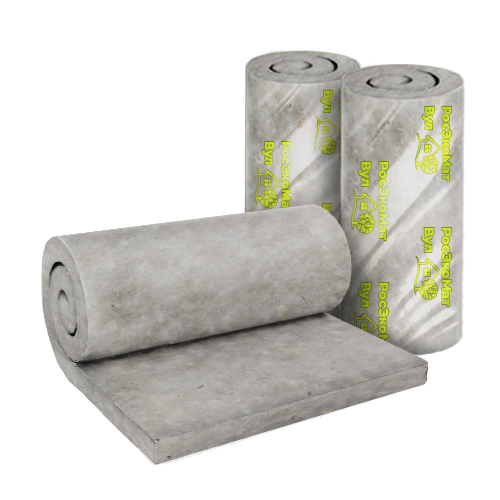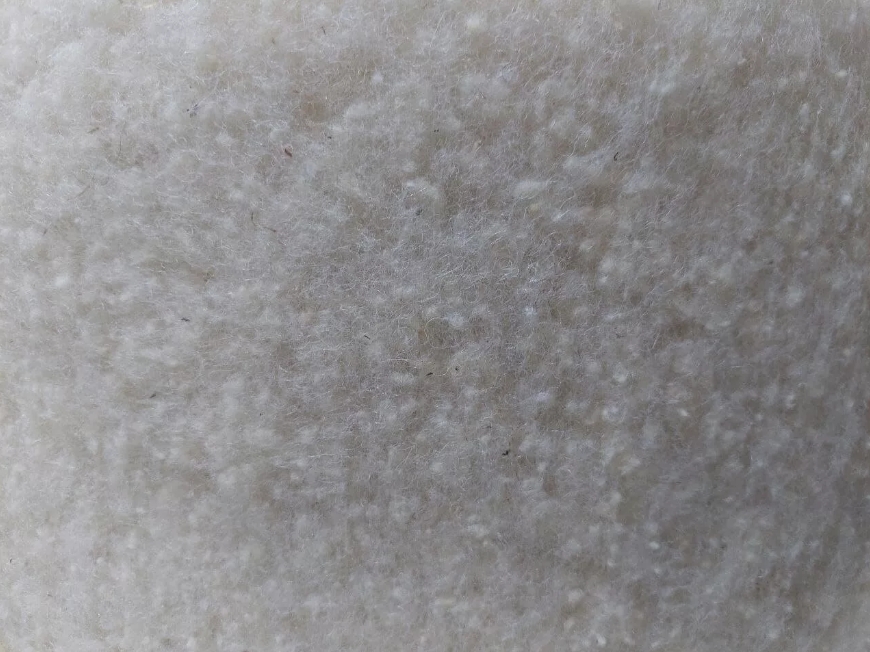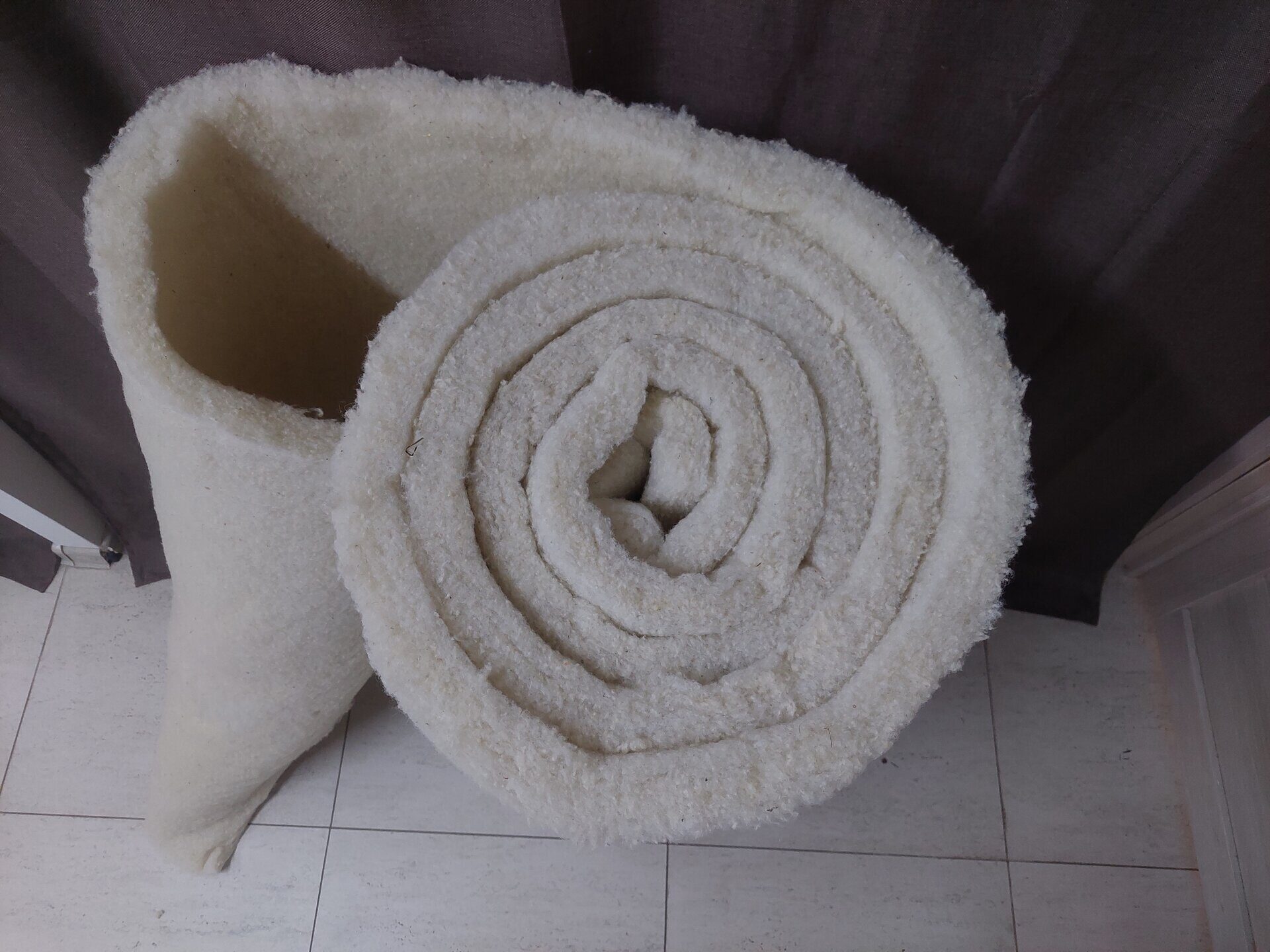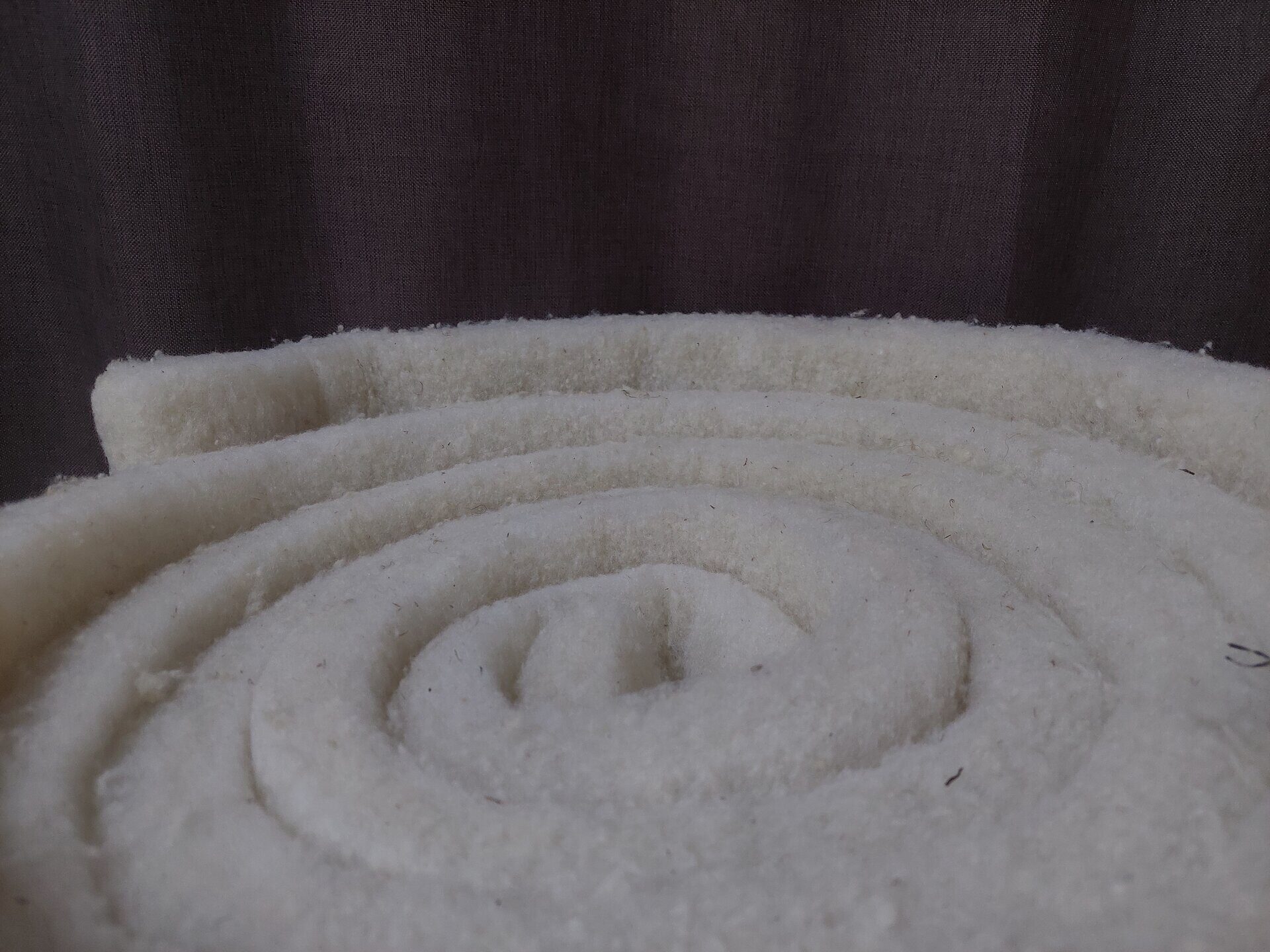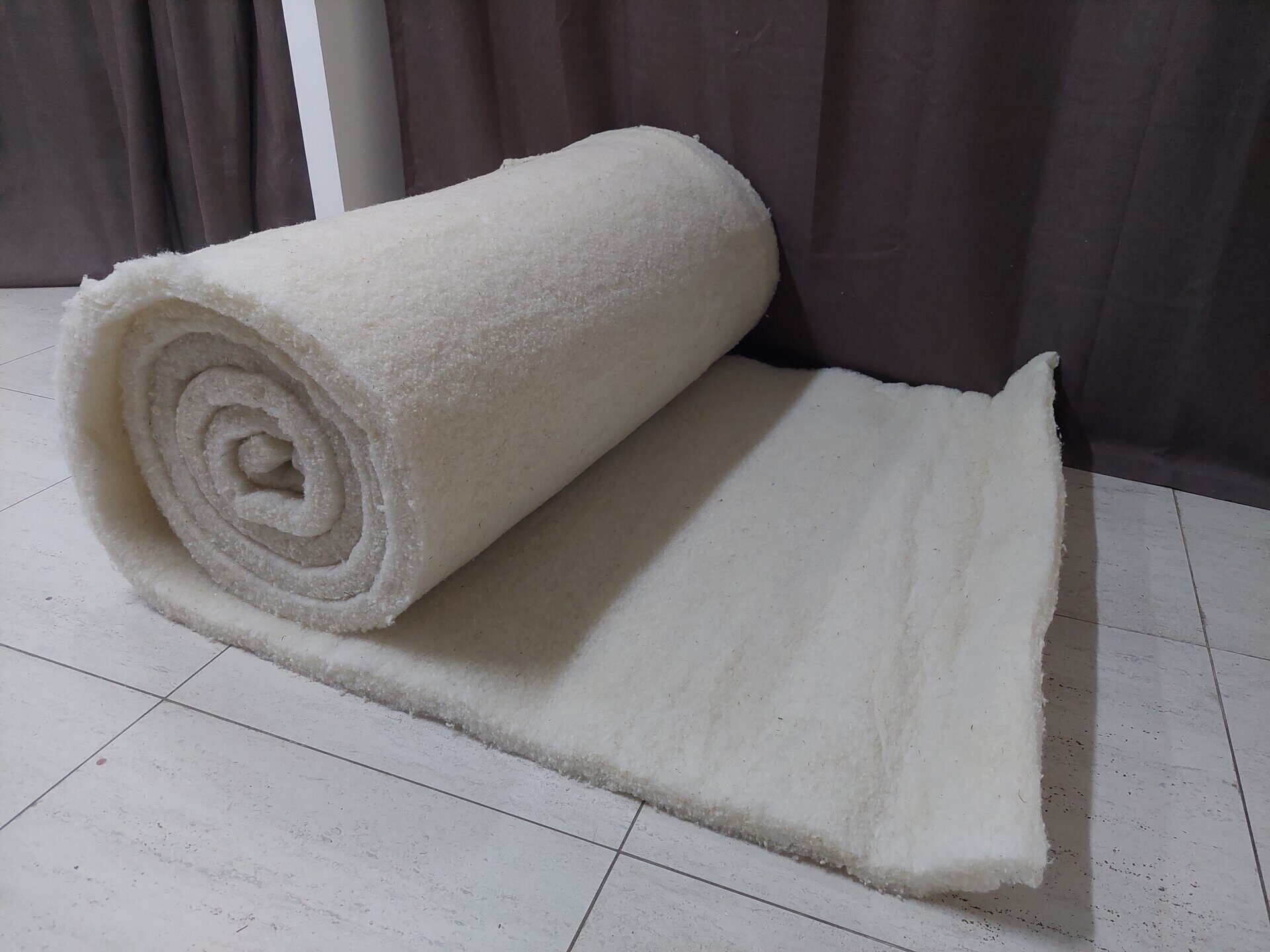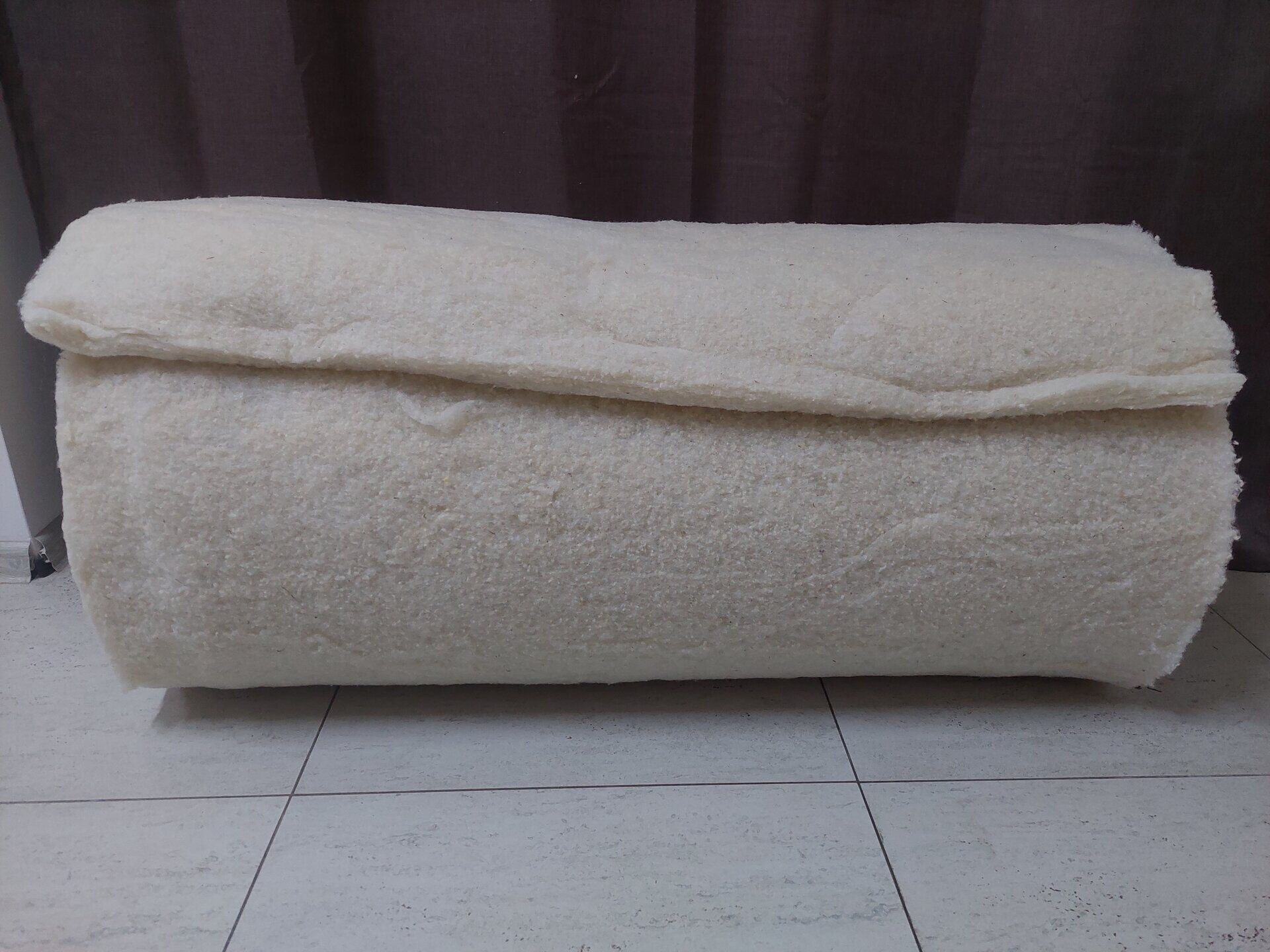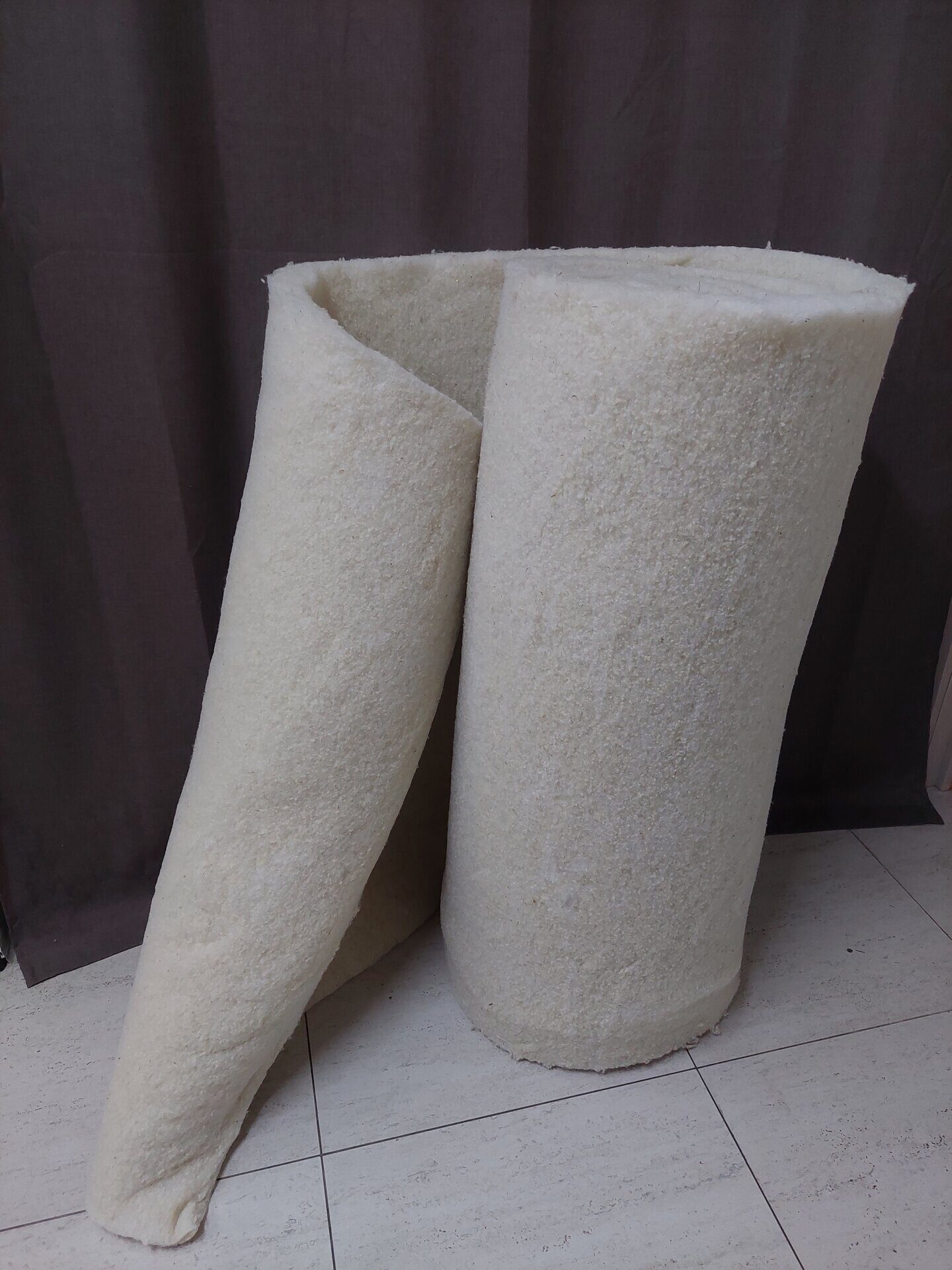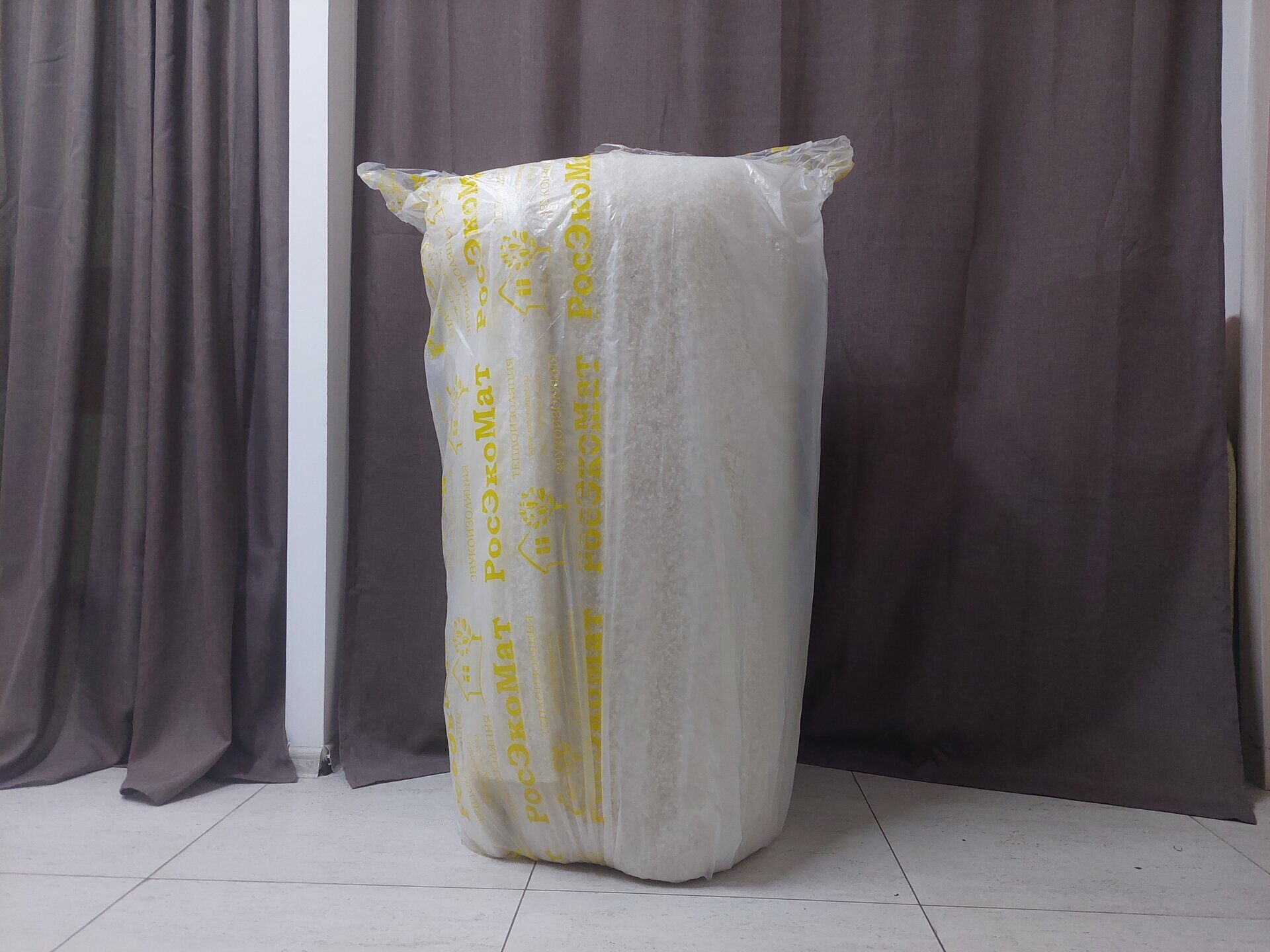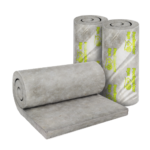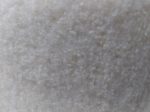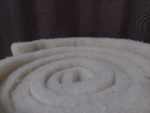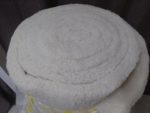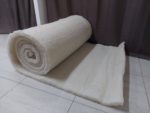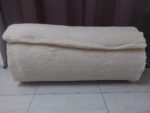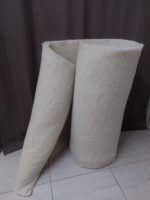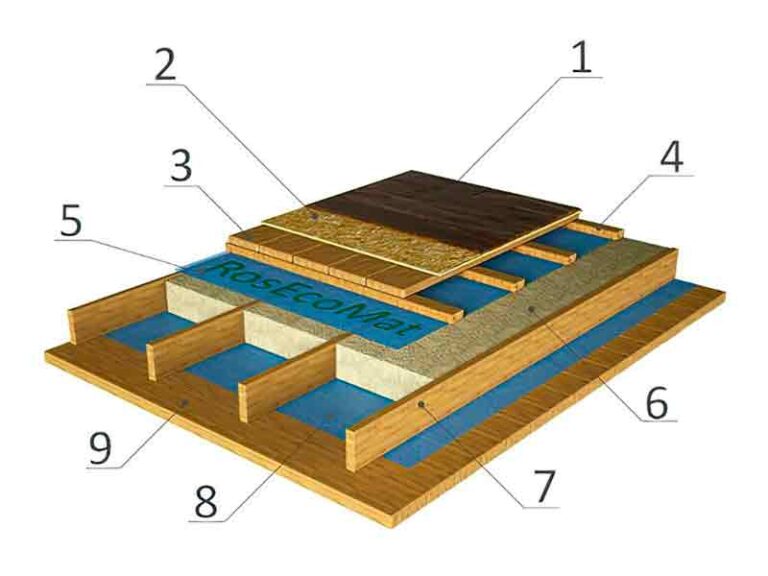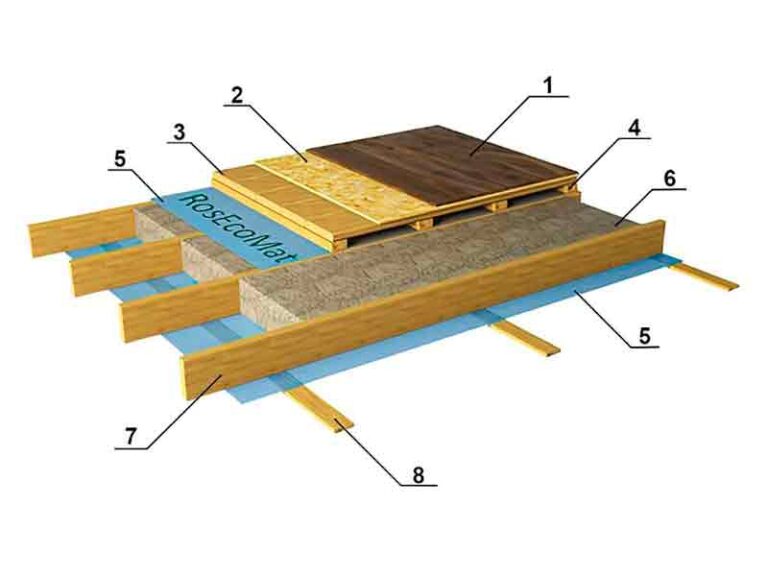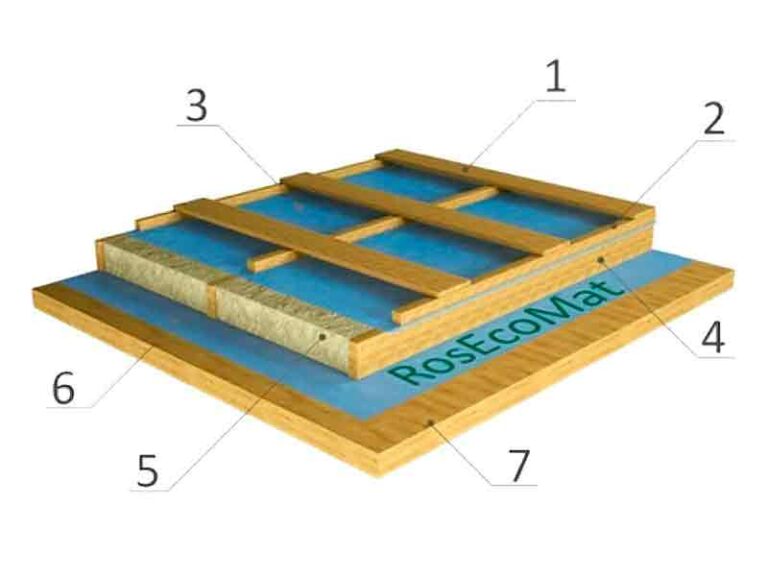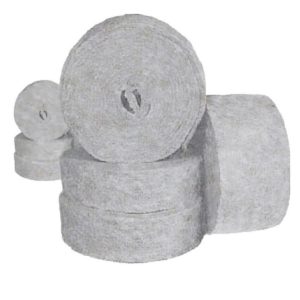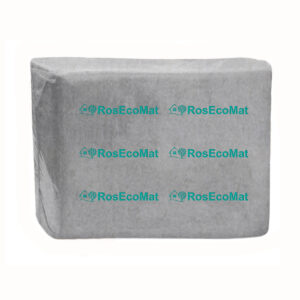Dear clients! Experts with many years of experience will help you find the perfect solution for your needs. We also offer free consultations on the mounting of insulation materials.
Applications of «RosEcoMat Wool»:
- Timber frame walls — filling of wall cavities.
- Attics and roofs — insulation of pitched roofs and ceilings.
- Floors and ceilings — sound and thermal insulation.
- Interior walls/partitions — additional soundproofing.
- Building restoration — eco-friendly material for both old and new constructions.
Technical properties:
- Thermal conductivity: 0.035–0.040 W/m·K.
- Vapor permeability: high, the material «breathes.»
- Thickness of boards/mats: 20–100 mm.
- Fire safety class: C-s2, d0 — limited combustibility, moderate smoke production, no droplets.
- Ignition temperature: approx. 580 °C.
- Operating humidity: up to 20% without loss of performance.
- Service life: over 50 years.

Advantages of «RosEcoMat Wool»:
- Ecology and safety — 100% natural product.
- Compatibility with wood — supports a healthy indoor climate.
- Sound insulation — excellent absorption of medium and high-frequency sound waves.
- Hygroscopicity — absorbs and releases moisture without quality loss.
- Vapor permeability — prevents greenhouse effect inside buildings.
- Durability — retains shape and properties for decades.
- Easy installation — lightweight, elastic, easy to cut and lay.
- Energy efficiency — reduces heating and cooling costs.
Unique properties of sheep wool:
- Sheep wool fiber consists of keratin protein molecules.
- Keratin amino acids bind formaldehyde, NOₓ, and SO₂.
- Wool fibers are elastic and resilient: they act like coil springs (stretch when pulled, contract when released).
- Each fiber withstands over 20,000 compressions.
- Keratin molecules inhibit the spread of mold and fungi.
- Wool can absorb moisture while retaining insulation properties (fibers can hold up to one-third of their own weight in water), preventing condensation.
- The scaly structure of the fiber traps dust particles from the air.
- With a sound absorption coefficient of 0.70–1.15, sheep wool provides excellent acoustic insulation, especially effective in the mid-to-high frequency range. In the 500–4000 Hz range, wool mats absorb up to 95–100% of sound.
- The spiral structure of wool molecules reduces sound propagation.
Fire safety:
- Sheep wool does not burn — ignition requires 25.2% oxygen.
- Ambient air contains only about 21% oxygen → burning wool self-extinguishes.
- Ignition temperature of sheep wool: approx. 580 °C.
Size and packaging
| Length(mm) | Width(mm) | Thickness(mm) | Package area(m2) | Volume density(m3) | Rolls in packaging |
| 7500 | 1200 | 40 | 9 | 0,36 | 1 |
| 6000 | 1200 | 50 | 7,2 | 0,36 | 1 |
| 5000 | 1200 | 60 | 6 | 0,36 | 1 |
| 3750 | 1200 | 80 | 4,5 | 0,36 | 1 |
| Length(mm) | Width(mm) | Thickness(mm) | Package area(m2) | Volume density(m3) | Rolls in packaging |
| 7500 | 600 | 40 | 9 | 0,36 | 2 |
| 6000 | 600 | 50 | 7,2 | 0,36 | 2 |
| 5000 | 600 | 60 | 6 | 0,36 | 2 |
| 3750 | 600 | 80 | 4,5 | 0,36 | 2 |
